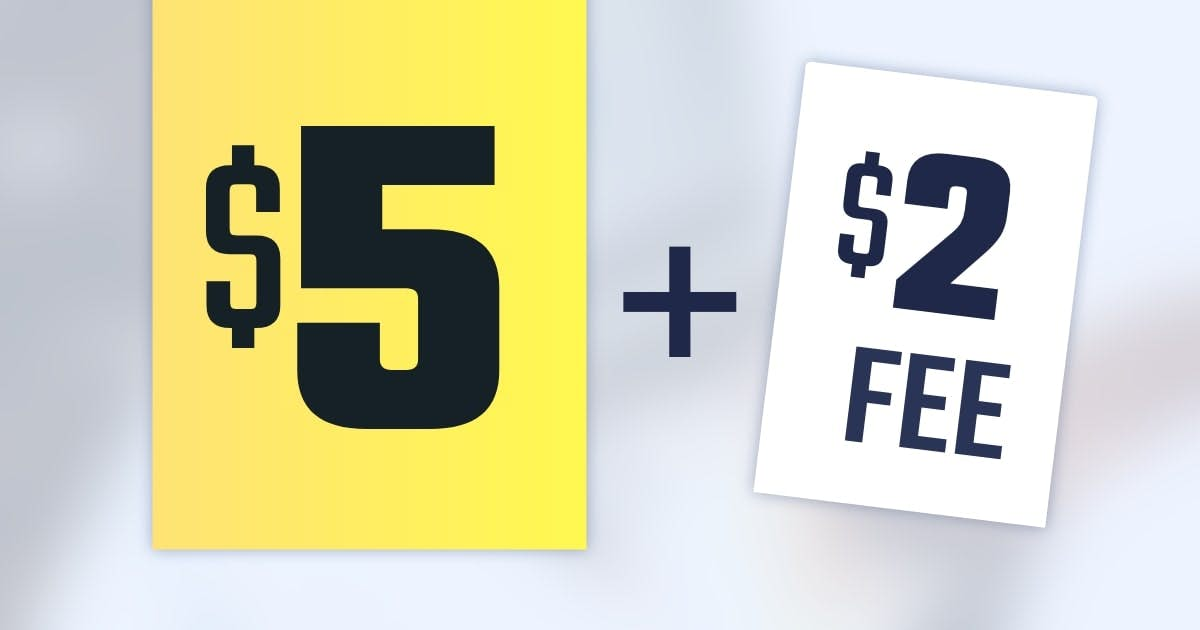Pricing
Tactic
Separate Your Price Into Smaller Fees
These “partitioned prices” are more persuasive.

Overview
Customers fixate on a base price.
As a result, businesses try to reduce their base price. How? By adding fees:
- Airlines: bags, seat selection, meals, wi-fi, priority boarding, etc.
- Car Rentals: insurance, refueling, cleaning, additional drivers, etc.
- Banks: maintenance, overdraft, ATM, inactivity, check bounces, etc.
A $95 airline ticket feels like a good deal. If we encounter fees later, we dismiss or justify them because we established it's a good deal.
Fees also work because:
- Favorable Price Comparisons. Customers compare $95 to other ticket prices, so it needs to be competitive.
- Less Sticker Shock. A single, high price can deter customers.
- Perceived Value. An airline could list many perks (e.g., meals, wi-fi, seat selection). With prices "starting" at $95. We compare $95 with all perks, and it seems like a great deal.
Even if you can't offer additional services, you could use arbitrary labels — processing fee, convenience fee, service charge, etc.
We probably need more policy regulations on partitioned fees.
- Frischmann, T., Hinz, O., & Skiera, B. (2012). Retailers' use of shipping cost strategies: Free shipping or partitioned prices?. International Journal of Electronic Commerce, 16(3), 65-88.
- Hossain, T., & Morgan, J. (2006). ... plus shipping and handling: Revenue (non) equivalence in field experiments on ebay. Advances in Economic Analysis & Policy, 5(2).
- Ward, S. G., & Clark, J. M. (2002). Bidding behavior in on-line auctions: An examination of the eBay Pokemon card market. International Journal of Electronic Commerce, 6(4), 139- 155.
